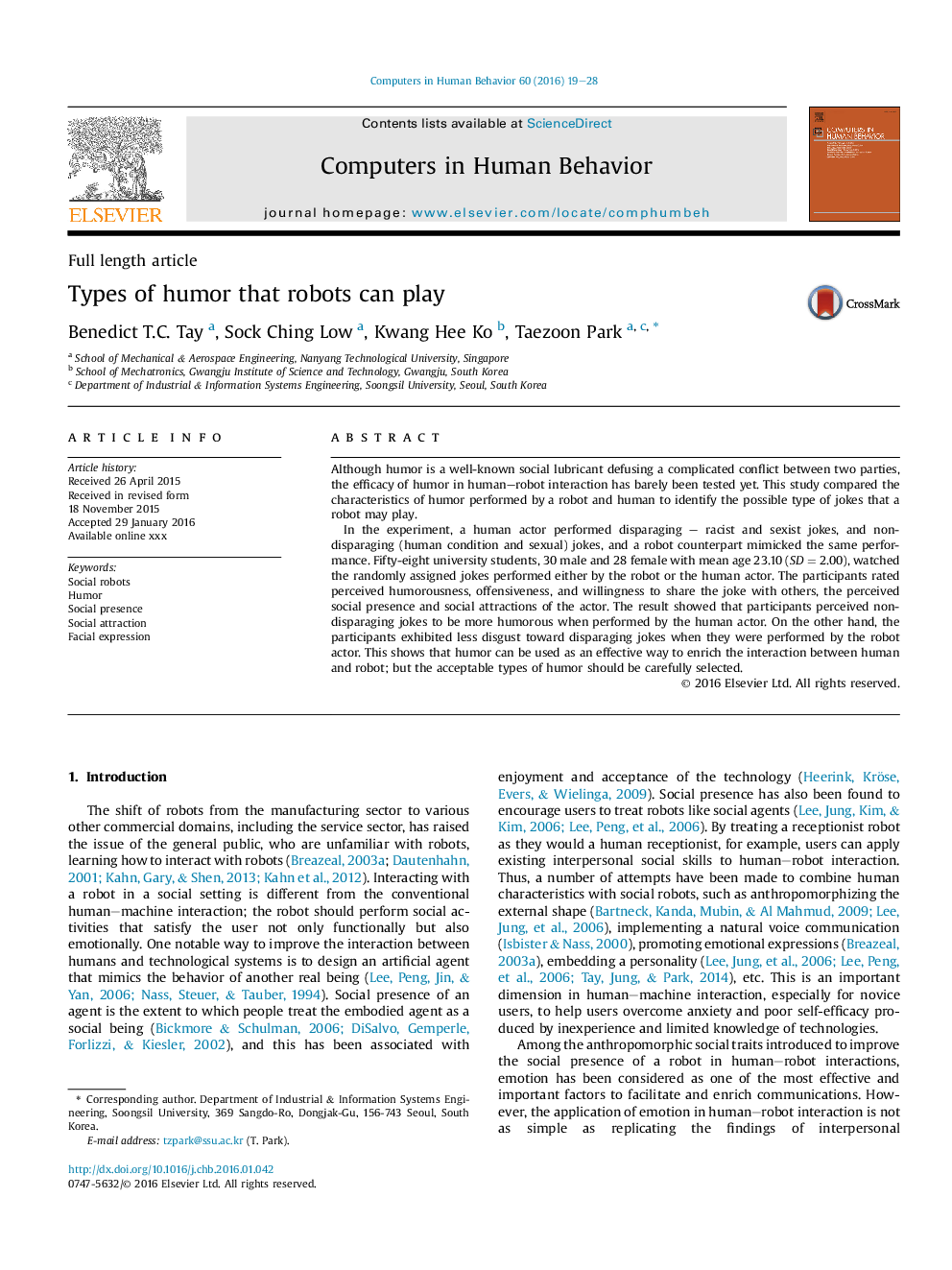| Article ID | Journal | Published Year | Pages | File Type |
|---|---|---|---|---|
| 6837178 | Computers in Human Behavior | 2016 | 10 Pages |
Abstract
In the experiment, a human actor performed disparaging - racist and sexist jokes, and non-disparaging (human condition and sexual) jokes, and a robot counterpart mimicked the same performance. Fifty-eight university students, 30 male and 28 female with mean age 23.10 (SDÂ =Â 2.00), watched the randomly assigned jokes performed either by the robot or the human actor. The participants rated perceived humorousness, offensiveness, and willingness to share the joke with others, the perceived social presence and social attractions of the actor. The result showed that participants perceived non-disparaging jokes to be more humorous when performed by the human actor. On the other hand, the participants exhibited less disgust toward disparaging jokes when they were performed by the robot actor. This shows that humor can be used as an effective way to enrich the interaction between human and robot; but the acceptable types of humor should be carefully selected.
Related Topics
Physical Sciences and Engineering
Computer Science
Computer Science Applications
Authors
Benedict T.C. Tay, Sock Ching Low, Kwang Hee Ko, Taezoon Park,
